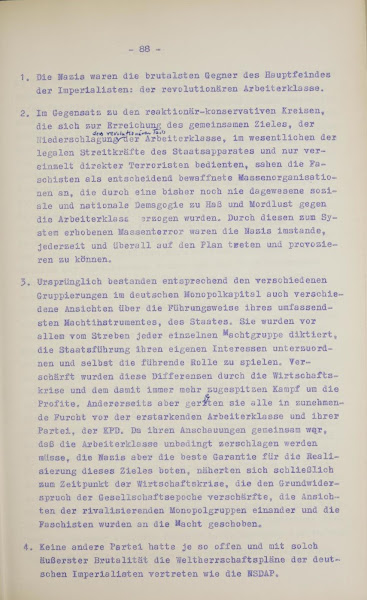
From the Faculty of Engineering Economics of Transport and Communications at the Friedrich List University of Transport in Dresden
“Development trends in the German motor vehicle industry 1929 - 1939 shown using the example of Auto Union AG Chemnitz”
Dissertation for the degree of Doctor of Economics submitted by Peter Kirchberg from Dresden in May 1964
Examiner: Prof. Dr.rer cec.habil E Rebbein
The aim of this work is to demonstrate the connection between fascism and motorization in Germany up to the beginning of the Second World War. From this point of view, the development trends of the German motor vehicle industry were examined within the framework of the state monopoly system of the economy in general and in the areas of production, sales and technical development in particular using the example of Auto Union AG. An analysis of the situation of the motor vehicle industry since around 1929 was chosen as the starting point for these presentations. The author studied sources in the archives
Saxon State Archive Leipzig
Saxon State Main Archive Dresden
German Central Archive Potsdam
Works Archive VEB Sachsenring "Zwickau"
Archive of the German Central Bank District Dresden Archive of the Central Development and Design Office of the VVB Automobilrau Karl Marx-Stadt
The work is based essentially on the Auto Union holdings in the Leipzig State Archives. This is, however, incomplete and may amount to less than half of the original holdings. The Dresden holdings (Central Bank and State Building Archives) have also been diminished by the effects of the war and post-war.
On the one hand, these gaps in the sources set certain limits to the work, but these were also limited by the possible scope. Therefore, some problem areas (e.g. motorsport, exports, the relationship between Auto Union and other companies in the motor vehicle industry) could be used. Others (e.g. technical development) are presented in more detail but more briefly than the author would have liked. An explanation of further development under the conditions of the war economy had to be dispensed with, as this would have exceeded the scope of the work. The fact that there are hardly any published studies on the development of the motor vehicle industry up to 1939 made things even more difficult. The general context, which could otherwise have been assumed to be known, therefore had to be presented more often.
I would like to thank Prof. Dr.habil. E.Rehbein for her helpful support of the work. I also gratefully accepted the numerous tips from Dr. Müller. The author owes thanks to Mr. General Director Lang of VVB Automobilbau; Mr. Herrmann, Director of the Advertising Department of VVB; Mr. Dr. Schußler, Head of the TKV Department at VEB Sachsenring, Zwickau; Mr. Albert Locke, Zwickau; Mr. Ing. Friedrich, VEB Motorradwerk Zschopau; Mr. Gaudlitz, commercial director of the Barkaswerke, Karl Marx Stadt for kindly providing eyewitnesses to the history of the Auto Union, numerous Saxon tips and the communication of technical details not on record. For kind support in technical and organizational matters, I would like to thank my colleagues from the Leipzig State Archives, the Saxon State Main Archives in Dresden, the archives of the German Central Bank in Dresden, and especially the documentalist from the Institute for the History of Technology at the TU Dresden, Herrn Schmadicke.
Dresden in May 1964
[This will eventually be translated into English when I get time.]
















h;">
























































































































































































































No comments:
Post a Comment